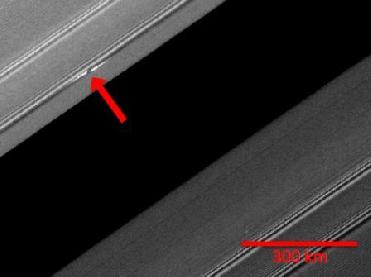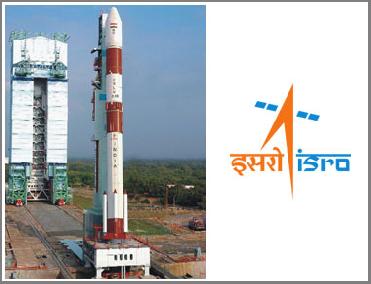
A propeller-shaped structure created by an unseen moon is brightly illuminated on the sunlit side of Saturn's rings in this image obtained by NASA’s Cassini spacecraft. NASA/JPL/SSI photo.
PASADENA, CALIFORNIA (BNS): Scientists using NASA's Cassini spacecraft at Saturn have stalked a new class of moons in the rings of Saturn that create distinctive propeller-shaped gaps in ring material.
This mark the first time scientists have been able to track the orbits of individual objects in a debris disk.
"Observing the motions of these disk-embedded objects provides a rare opportunity to gauge how the planets grew from, and interacted with, the disk of material surrounding the early sun," said Carolyn Porco, Cassini imaging team lead based at the Space Science and a co-author on the paper.
Cassini scientists first discovered double-armed propeller features in 2006 in an area now known as the "propeller belts" in the middle of Saturn's outermost dense ring, known as the A ring.
The new paper, led by Matthew Tiscareno, a Cassini imaging team associate based at Cornell University, reports on a new cohort of larger and rarer moons in another part of the A ring farther out from Saturn.
The propeller features are up to several thousand kilometers (miles) long and several kilometers (miles) wide. The moons embedded in the ring appear to kick up ring material as high as 0.5 kilometers (1,600 feet) above and below the ring plane, which is well beyond the typical ring thickness of about 10 meters (30 feet). The results published in the Astrophysical Journal Letters said.
Cassini is too far away to see the moons amid the swirling ring material around them, but scientists estimate that they are about a kilometer (half a mile) in diameter because of the size of the propellers.
Tiscareno and colleagues estimate that there are dozens of these giant propellers, and 11 of them were imaged multiple times from 2005 to 2009. One of them, nicknamed Bleriot after the famous aviator Louis Bleriot, has shown up in more than 100 separate Cassini images and one ultraviolet imaging spectrograph observation over this time.
Over the four years, the giant propellers have shifted their orbits, but scientists are not yet sure what is causing the disturbances in their travels around Saturn. Scientists will continue monitoring the moons to see if the disk itself is driving the changes, similar to the interactions that occur in young solar systems. If it is, Tiscareno said, this would be the first time such a measurement has been made directly.
 Previous Article
Previous Article Next Article
Next Article













The Indian Air Force, in its flight trials evaluation report submitted before the Defence Ministry l..
view articleAn insight into the Medium Multi-Role Combat Aircraft competition...
view articleSky enthusiasts can now spot the International Space Station (ISS) commanded by Indian-American astr..
view article